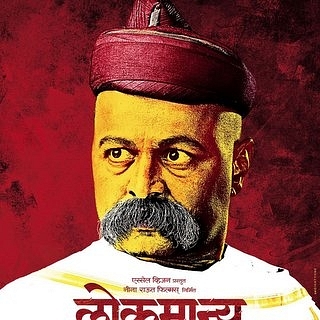
Lokmanya: Tilak in his Splendour
The movie leaves you with a special place in the heart for the great man, and you will for a long time, remember Tilak through Bhave.
Thousands of Indians led from the front in the long and hard freedom struggle of the country against the British, but unfortunately, in the present day India, very few of them remain on top of the minds of an average Indian. There were those who dedicated their lives and sacrificed their families, there were people who withstood immense hardship, and then there were those who took the cause to the average Indian and created a revolution by generating awareness amongst the masses by “connecting” with them and speaking their language – thus inspiring millions to plunge into the battle and take up the cause.
A visionary like Bal Gangadhar Tilak was a leader who was in the forefront in all of these, yet, the country somehow manages to forget him in the hustles and bustles of the “free” and self ruled India he had imagined.
When a work of art is made about such extraordinary gentlemen to whom the country owes a lot, it is very important that it portrays them in the right light so that their legacy can be reborn. So that they are understood and studied by the youth of the country and be remembered as heroes. Such works of art have a huge responsibility in that context. One such work of art that has fulfilled this responsibility to the core is the Marathi movie on Tilak, Lokmanya: Ek Yugpurush, that got released over the previous weekend.
I am not a native Marathi speaker (this was only the 4th Marathi movie I was watching), and not a regular movie goer too, but this one was an eagerly awaited piece for a few months now. Om Raut‘s direction of the movie and the story line he has written with Kaustubh Savarkar have strictly stuck to the historical facts. The direction of the movie is exemplary,with brilliant art direction and costume design, taking the viewer back to the bygone era. The streets of Maharastra, the traditional homes of Pune, the costumes people wore with pride and the colourful markets of that time are all depicted vividly.
As for the reformer Tilak, the portrayal by Subodh Bhave would just leave the viewer in awe. The same man, who performed the role of Balgandharva in 2011 and played the many female stage characters portrayed by the legendary thespian with grace, transforms himself to become the authoritative and belligerent genius of Tilak with ease.
Tilak, a man who demanded respect from friends, detractors and enemies alike through his ideologies, knowledge, charisma and stature, is brought to life in the most sensational fashion by Bhave, breathing life into every dialogue and leading to goosebumps as he asserts “Swarajya ha majha janmasiddha hakk ahe! Ani to mi milavanarach!” (Swarajya / self-rule is my birthright. And I shall have it). The background score and the music add to the scene and the movie becomes an epic.
Most other roles have performed well too, the casting is excellent, and although some parts of the flow stray a little bit due to the contemporary story that runs in parallel, that of Makarand the reporter who starts delving into Tilak and his ideals, the overall movie experience leaves you with a special place in the heart for the great man, and you will for a long time, remember Tilak through Bhave.
The movie watching experience also brought back memories of my own visits to Pune and made me realize how much of today’s Pune owes its existence to Tilak. A visit to the Sinhagad Fort a couple of rainy seasons ago and witnessing Tilak’s seclusion home on top made me feel prouder. Do go and watch the movie while you can. Tilak deserves to be remembered in this rich, colourful and masterful way.